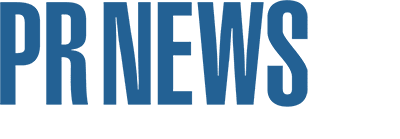As companies look at addressing their D&I issues, one place to start may be who should fill the shoes of those replaced. Particularly in media, no one can leave a prestigious editorial leadership position gaping for long, as news never stops. However, who and how you choose to replace can have a long-term impact on any organization.
Diversity, Equity & Inclusion


Internal Communication Shows Support for Protest Movement
June 8th, 2020 by Nicole SchumanMany employees have received or will receive statements from senior management detailing the company’s stance on supporting diversity and the Black Lives Matter protests. The PR community knows the power of communication and what words and messages represent. We look at how some companies and trade groups are shaping internal communication at this moment.

[VIDEO] Dwayna Haley and Neil Foote talk with PRNEWS about Diversity in Communications
June 8th, 2020 by Mark RenfreePorter Novelli SVP Dwayna Haley and Neil Foote, president of the National Black Public Relations Society, talk to PRNEWS Editor Seth Arenstein about diversity in communications.

Mr. Floyd and My Dad: Moving from Exclusion to Inclusion
June 7th, 2020 by Angela ChitkaraThe killing of George Floyd led the author to think of her father, an immigrant who poured his life into his children. He expected that providing his children with a strong education would help them succeed professionally and personally. Pure merit isn’t enough when structural racism and exclusionary practices exist. The status quo must go, the author argues. Stakeholder capitalism is here to stay.

In Buffalo, a Tale of Two Videos Exposes PR Truths and Questions
June 5th, 2020 by Seth ArensteinYet another example of police brutality was caught on video. This time it was against a white man, in Buffalo, NY. Complicating the issue is that police claim their response statement was crafted as they looked at a second video, as opposed to one that went viral and created a crisis. From a PR standpoint, the incident raises issues about honest communication and how long to wait before you respond to a crisis.

Drew Brees Fumbles Statement, Creates PR Nightmare for NFL
June 4th, 2020 by Nicole SchumanOccasionally a public figure or employee will take a stance that drifts from the overarching owner or employer. That’s when the brand goes into overtime assuring consumers and followers that the opposing message does not represent the entire organization. The NFL played it safe while Brees sat on the hot seat.

Diversity and Inclusion Needs Less Talk, More Action
June 4th, 2020 by Nicole SchumanWhile many agencies and brands have voiced their support via social media posts and statements, real action needs to be taken in order to prove the support the industry claims for a more diverse workforce.

How Companies Can Avoid Making Empty Statements About Diversity
June 4th, 2020 by Wendy RoundtreeMany companies and organizations are taking stands in support of recent events. More than a few of their statements fall flat. There are several things an organization should consider before it takes a stand. First, avoid empty statements, be sensitive, honest and, most important, say something real.

It’s Time to Get Uncomfortable
June 3rd, 2020 by Dwayna Haley, SVP & Practice Director, Brand Innovation & Impact, Porter NovelliAs communicators, we have a powerful opportunity to positively influence behavior change. Through messaging with strategic calls-to-action, brilliant creative and multichannel outreach, we can impact wide-spread sea change in any environment. Whether you’re operating from agency or brand, our shared purpose within this discipline is to do well by doing good.

Why PR Needs to Avoid Convenient Diversity Now
June 2nd, 2020 by Neil FooteThe business case for diversity and inclusion is well known. Now, the pandemic and wrongful death of George Floyd in Minneapolis have teed up an opportunity for corporate communicators and PR agencies to re-shape their organizations’ values on diversity and inclusion. It’s a moment that PR should not miss.
